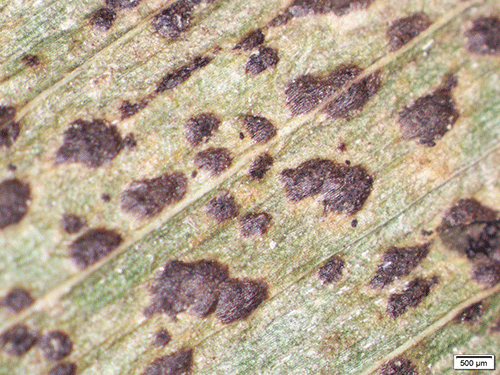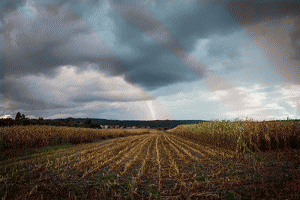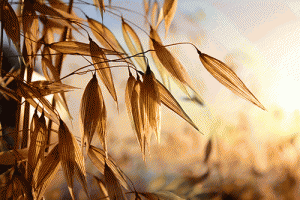Emerging corn diseases
CONCERNS SOUTH OF THE BORDER

PLANT PATHOLOGISTS AT Iowa State University Extension are red-flagging three newly emerging corn diseases and asking farmers to submit possible samples during the coming crop season.
On the radar screen are bacterial leaf streak (BLS), tar spot, and Physoderma brown spot/node rot.
BLS
The first known cases of bacterial leaf streak in Iowa were confirmed in six counties in north central and northeastern Iowa last summer, affecting field corn, sweet corn, popcorn, and seed corn. Cases were also identified in Minnesota, South Dakota, Nebraska, Colorado, Kansas, Illinois, and Texas in 2016, and BLS may be more widespread in the American Corn Belt.
It is caused by the Xanthomonas vasicola pv. vasculorum pathogen, which has caused gumming disease in sugarcane, and was previously reported as a disease of corn in South Africa and South America in 1949.
Bacterial leaf streak produces long, narrow lesions that range from less than an inch to several inches and occur between the veins of the corn leaves, close to the midrib or across the leaf blade. Lesions are tan, brown, or orange. They can resemble gray leaf spot but have wavy margins, unlike the straight sides and rectangular look of leaf spot lesions.
Bacterial leaf streak also displays characteristic long, yellow halos that extend from each lesion when the leaf is backlit.
Leaf streak can also look like common rust, but it will not have rust’s dark pustules.
Leaf streak survives in infected corn debris from previous years and is thought to infect plants through natural openings in the leaves.
Little research has been done to date on leaf streak, but warm temperatures, irrigation, and wind-driven rain are believed to encourage its development. Foliar fungicides are not expected to be effective in controlling BLS. Until more research is completed, growers are advised to use standard management practices for bacterial diseases.
Sanitation practices such as cleaning combines of debris may help slow its spread to unaffected fields, and crop rotation or tillage may help degrade affected corn debris.
At present, the disease’s affect on yield and crop quality are unknown.
PHOTO: BACTERIAL LEAF STREAK.

TAR SPOT
Tar spot (Phyllachora maydis) was first reported in the U.S. in 2015 in Indiana and Illinois. In 2016 it appeared in both those states plus Florida, Michigan, and eastern Iowa.
Its small, raised black spots scattered across the leaf surface are the fungus’ fruiting structures, and viewed under a microscope, they are filled with hundreds of sausage-shaped spores.
Tar spot can be confused with common and southern rust, but rust spores can be scraped from the pustules with a fingernail. Tar spot cannot be scraped off leaf tissue.
Tar spot is more common in Mexico and Central America, where it can produce yield losses when present in association with another fungus, Monographella maydis.
PHYSODERMA BROWN SPOT
Physoderma brown spot has been the most frequent to appear in Iowa and the number of cases has increased in the past decade. The same pathogen causes node rot, which has also been on the increase.
This fungus produces spores that swim in free water and can be spread by wind or splashed into the whorls of developing corn plants. When the whorls are filled with water from irrigation or heavy rains, the spores can infect growing corn tissues. Corn is most vulnerable to brown spot infection during the V5 to V9 growth stages.
Infected leaves show numerous very small round or oval spots (about 1/4th inch diameter) that are yellowish to brown and usually occur in broad bands across the leaf. Dark purplish to black oval spots appear on the midrib of the leaf and may also show on the stalk, leaf sheath, and husks.
Brown spot can be confused with eyespot, southern rust, or purple leaf sheath — look for the purplish oval spots as a determining symptom. It may also appear similar to Goss’ bacterial wilt, but Goss’ wilt shows a characteristic greasy look from oozing bacteria.
When Physoderma infects nodes 6 or 7, the result may be stalk rot. Affected plants may look very healthy with excellent yield potential but the infected nodes will snap easily when gently pushed. When walking rows of corn, listen for the characteristic snap.
Some hybrids appear to be more vulnerable to node rot.
Node rot can be confused with greensnap, but greensnap affects nodes V6 to V10.
Many fungicides are labeled for use on Physoderma brown spot but as yet there is no publicly available data on application timing.
PHOTO: PHYSODERMA BROWN SPOT.

ONTARIO CONCERNS?
“Bacterial leaf streak and tar spot have begun to show on the radar in the past couple of years, but we are still trying to get a handle on where they fit in and the risk factor,” says Albert Tenuta, field crop pathologist at the Ontario Ministry of Agriculture, Food and Rural Affairs.
Ontario’s annual survey of endemic corn diseases also tests for new emerging diseases including BLS and tar spot in hybrid commercial corn and seed corn, Tenuta confirms. “We’ve seen some examples that looked like leaf streak, but tests in the laboratory have come back negative.”
Still, he says, “it’s becoming more notable, and we will see it, probably in the southwest counties bordering the Great Lakes. He notes that Goss’ wilt, a disease showing similar patterns, has not yet been confirmed in the province either.
“Warmer temperatures, big rain events, and more irrigation could encourage both BLS and Goss’,” he notes.
No tar spot was found in the most recent survey, but “it’s probably one we’ll see in the next year or two,” Tenuta predicts. “I’m not as concerned about tar spot. What we’ve been seeing in Illinois and Indiana is that the economic yield loss doesn’t seem to be a big issue so far.”
Physoderma is seen in Ontario.
“Often we’ll see a lot of it on our seed corn, not only on the leaves and shank, but especially where the leaf and stalk join,” Tenuta says. “It’s one of those basic background pathogens we have on our corn to some degree every year, but I wouldn’t call it one of our big threats to corn production in the province right now,” Tenuta concludes. •
























